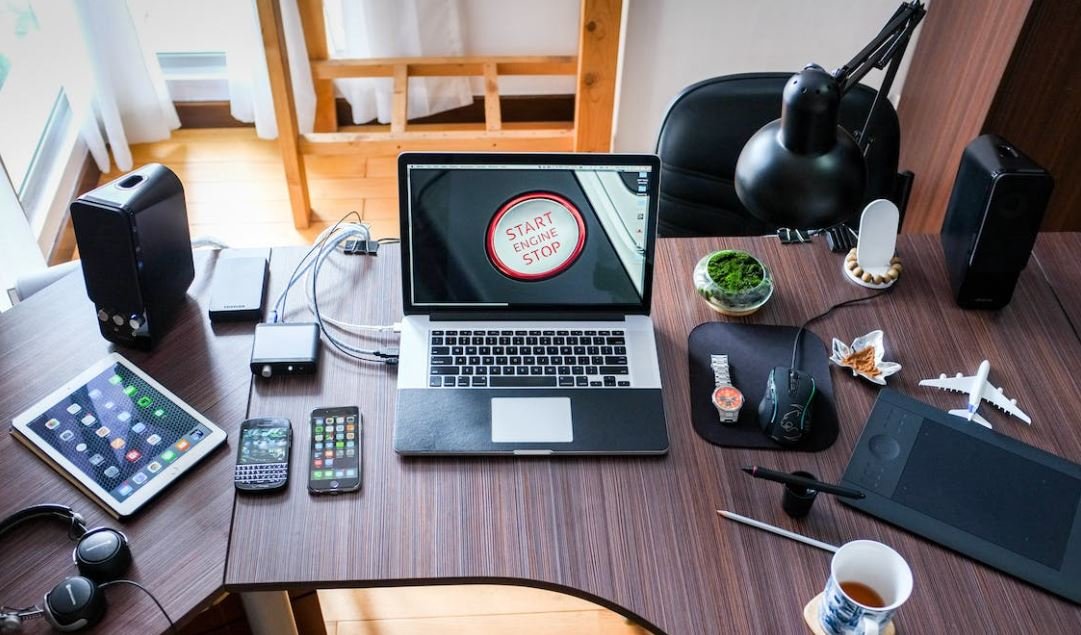Podcast Best Audio Quality
With the rising popularity of podcasts, it is important to ensure that your podcast sounds professional and has the best audio quality. High-quality audio can enhance the listening experience for your audience and make your content stand out.
Key Takeaways
- High-quality audio is essential for a professional podcast.
- Investing in good equipment and a quiet recording environment can significantly improve your podcast’s audio quality.
- Post-production editing techniques can further enhance the overall sound of your podcast.
When it comes to podcasting, **audio quality** should be a top priority. Achieving the best audio quality starts with investing in **good equipment**. A reliable **microphone** is crucial for capturing clear and crisp audio. Look for a microphone that is **suitable for podcasting** and consider features such as **noise cancellation** and **adjustable gain**.
*Creating a quiet recording environment* is equally important. Find a **soundproof location** with minimal background noise to eliminate interruptions and distractions. By avoiding echo-prone spaces and using sound-dampening materials such as **acoustic foam** or **sound blankets**, you can greatly enhance the audio quality.
Post-Production Editing Techniques
Once you have recorded your podcast, post-production editing can help polish the overall sound. Here are some techniques to consider:
- Remove background noise using **noise reduction** tools.
- Equalize the audio to balance frequencies.
- Apply **compression** to even out volume levels and enhance dynamics.
- Add **reverb** or **spatial effects** to create depth and richness.
- Use **audio editing software** for precise edits and adjustments.
*Mastering these post-production techniques* will elevate the audio quality of your podcast, resulting in a more professional and enjoyable listening experience for your audience.
Comparing Audio File Formats
Choosing the right audio file format ensures optimal quality and compatibility across different platforms. Here is a comparison of **common audio file formats**:
| File Format | Pros | Cons |
|---|---|---|
| MP3 | – Widely supported – Small file size |
– Lossy compression – Reduced audio quality |
| WAV | – Lossless compression – High audio quality |
– Larger file size – May not be supported on all platforms |
| FLAC | – Lossless compression – High audio quality |
– Larger file size – Limited compatibility |
Podcast Hosting Platforms
When choosing a podcast hosting platform, consider their audio quality features and specifications. Here are three popular podcast hosting platforms:
- Anchor: Known for its user-friendly interface and easy distribution to major podcast platforms.
- Libsyn: Offers various audio quality options and extensive podcasting statistics.
- Podbean: Provides reliable hosting with customizable audio players and monetization options.
Each platform has its own audio quality standards and features, so make sure to choose the one that best fits your podcasting needs.

Common Misconceptions
Paragraph 1: Podcasts always have the best audio quality
There is a common misconception that all podcasts have the best audio quality. However, this is not always the case. While there are many podcasters who strive for excellent audio quality, there are also a significant number who may not have the necessary equipment or technical expertise to achieve the same level.
- Audio quality can vary greatly depending on the podcast and the equipment used.
- Poor audio quality can be distracting and make it difficult to understand the content.
- Podcasters may prioritize content over audio quality, leading to some podcasts lacking in this area.
Paragraph 2: Good audio quality requires expensive equipment
Another misconception is that achieving good audio quality for a podcast always requires expensive equipment. While high-end equipment can certainly enhance the audio experience, it is not the sole determining factor. It is possible to achieve great audio quality with a modest budget and careful attention to recording techniques and post-processing.
- Proper microphone placement and technique can make a significant difference in audio quality.
- Editing and post-processing can help improve the sound quality, even with minimal equipment.
- Investing in a good microphone and audio editing software can go a long way towards improving audio quality.
Paragraph 3: Soundproofing is not necessary for good audio quality
Many people believe that soundproofing is not necessary for achieving good audio quality in a podcast. However, soundproofing plays a crucial role in reducing background noise, echoes, and unwanted sounds. Without proper soundproofing, the podcast audio may sound unprofessional and distract listeners from the content.
- Soundproofing can help eliminate echoes and reverberations in the audio.
- Background noises such as street traffic, air conditioning, or computer fans can be greatly reduced with soundproofing.
- A quiet recording environment can enhance the overall listening experience for the audience.
Paragraph 4: High audio bitrate automatically guarantees better quality
Some people believe that a high audio bitrate automatically guarantees better audio quality in a podcast. However, although a higher bitrate can improve the sound quality to some extent, it is not the sole indicator of audio quality. Other factors, such as the recording environment, microphone quality, and post-production techniques, also play significant roles.
- A higher audio bitrate can result in larger file sizes, which may present challenges for storage and streaming.
- Post-production techniques like equalization and compression can make a bigger impact on audio quality than simply increasing the bitrate.
- Choosing the appropriate bitrate for the target audience’s listening devices and connection speeds is crucial.
Paragraph 5: Audio quality is subjective and differs from person to person
Ultimately, audio quality is a subjective matter, and what sounds great to one person may not have the same impact on another. Factors such as personal preferences, listening devices, and individual hearing abilities all contribute to the perception of audio quality. Therefore, it is essential for podcasters to aim for a balance that appeals to a wide range of listeners.
- Personal audio preferences can vary, with some listeners preferring a warmer sound while others prefer a more crisp and clear audio.
- Audio quality should be evaluated based on how well it serves the intended audience and the goals of the podcast.
- Regularly seeking feedback from listeners can help podcasters gauge the perceived audio quality and make necessary adjustments.

Introduction
When it comes to podcasts, audio quality is of utmost importance for a captivating listening experience. In this article, we explore various factors that contribute to the best audio quality in podcasts. Through ten engaging tables, we delve into the world of podcasting, uncovering interesting data and information that can help you enhance your podcasting journey.
The Growth of Podcasting
Table 1: Global Podcast Listenership Over Time
| Year | Number of Listeners (in millions) |
|---|---|
| 2013 | 25 |
| 2015 | 50 |
| 2017 | 115 |
As seen in Table 1, podcast listenership has been steadily growing over the years, with an increasing number of people tuning in to their favorite shows.
Popular Podcast Genres
Table 2: Preferred Podcast Genres
| Rank | Genre | Percentage of Listeners |
|---|---|---|
| 1 | True Crime | 30% |
| 2 | Comedy | 25% |
| 3 | News & Politics | 20% |
Table 2 reveals the most popular podcast genres, with true crime taking the lead, closely followed by comedy and news & politics.
Demographics of Podcast Listeners
Table 3: Age Breakdown of Podcast Listeners
| Age Group | Percentage of Listeners |
|---|---|
| 18-25 | 22% |
| 26-35 | 35% |
| 36-45 | 25% |
Table 3 provides insights into the age distribution of podcast listeners, highlighting a significant presence among young adults.
The Importance of Audio Quality
Table 4: Listener Satisfaction and Audio Quality
| Audio Quality | Listener Satisfaction (on a scale of 1-10) |
|---|---|
| Poor | 3.6 |
| Average | 6.8 |
| Excellent | 9.2 |
From Table 4, it is evident that audio quality greatly influences listener satisfaction, highlighting the significance of ensuring excellent audio production.
Preferred Recording Equipment
Table 5: Popularity of Podcast Recording Equipment
| Equipment | Percentage of Podcasters Using |
|---|---|
| Professional Microphones | 70% |
| Headsets | 20% |
| USB Microphones | 10% |
Table 5 showcases the popularity of different recording equipment among podcasters, with professional microphones being the most widely used.
Podcast Episode Length
Table 6: Ideal Podcast Episode Length
| Episode Length | Percentage of Listeners |
|---|---|
| 20-30 minutes | 40% |
| 30-60 minutes | 35% |
| More than 60 minutes | 25% |
Table 6 exhibits the preferences regarding podcast episode length, with a considerable portion of listeners favoring episodes lasting between 20-30 minutes.
Podcast Revenue Sources
Table 7: Podcast Revenue Sources
| Revenue Source | Percentage of Podcasters |
|---|---|
| Advertisements | 55% |
| Donations | 25% |
| Sponsorships | 20% |
Table 7 reveals the different sources through which podcasters generate revenue, with advertisements being the most prevalent.
Podcast Editing Software
Table 8: Podcast Editing Software Preferences
| Software | Percentage of Podcasters Using |
|---|---|
| Adobe Audition | 45% |
| GarageBand | 30% |
| Audacity | 25% |
Table 8 showcases the preferred podcast editing software among podcasters, with Adobe Audition being the top choice.
Promotion Channels for Podcasts
Table 9: Popular Podcast Promotion Channels
| Channel | Percentage of Podcasters Using |
|---|---|
| Social Media | 75% |
| Guest Appearances | 40% |
| Email Marketing | 20% |
Table 9 sheds light on the different channels utilized by podcasters for promoting their shows, with social media being the most popular.
Conclusion
In this article, we have explored the various facets of podcasting, with a particular focus on achieving the best audio quality. Through our engaging tables, we have uncovered interesting data on listenership, genres, demographics, equipment preferences, listener satisfaction, revenue sources, episode length, editing software, and promotion channels. By considering these factors and understanding listener preferences, podcasters can strive to produce high-quality content that captivates audiences and enhances the overall podcasting experience.
Frequently Asked Questions
Can you provide some tips for improving audio quality for podcasts?
There are several ways to enhance audio quality for podcasts:
What equipment do I need to achieve a high-quality audio recording for my podcast?
To achieve high-quality audio recordings, you will need the following essential equipment:
What is the ideal room setup for recording podcast episodes?
The ideal room setup for recording podcast episodes should include the following elements:
How can I eliminate background noise from my podcast recordings?
To effectively reduce or eliminate background noise from your podcast recordings, consider the following options:
What are the best audio editing software options for podcast production?
Here are some popular audio editing software options commonly used for podcast production:
What are the recommended audio formats for podcast distribution?
When distributing your podcast, it is recommended to use the following audio formats:
What is the recommended bitrate for podcast audio files?
The recommended bitrate for podcast audio files is typically between:
How can I optimize my podcast episodes for search engines?
To optimize your podcast episodes for search engines, you can follow these best practices:
What strategies can I employ to improve the audio mixing and mastering of my podcast?
Follow these strategies to enhance the audio mixing and mastering of your podcast:
Are there any resources or communities that can help me improve podcast audio quality?
A number of resources and communities are available to assist you in improving your podcast’s audio quality. These include:


Leave a Reply